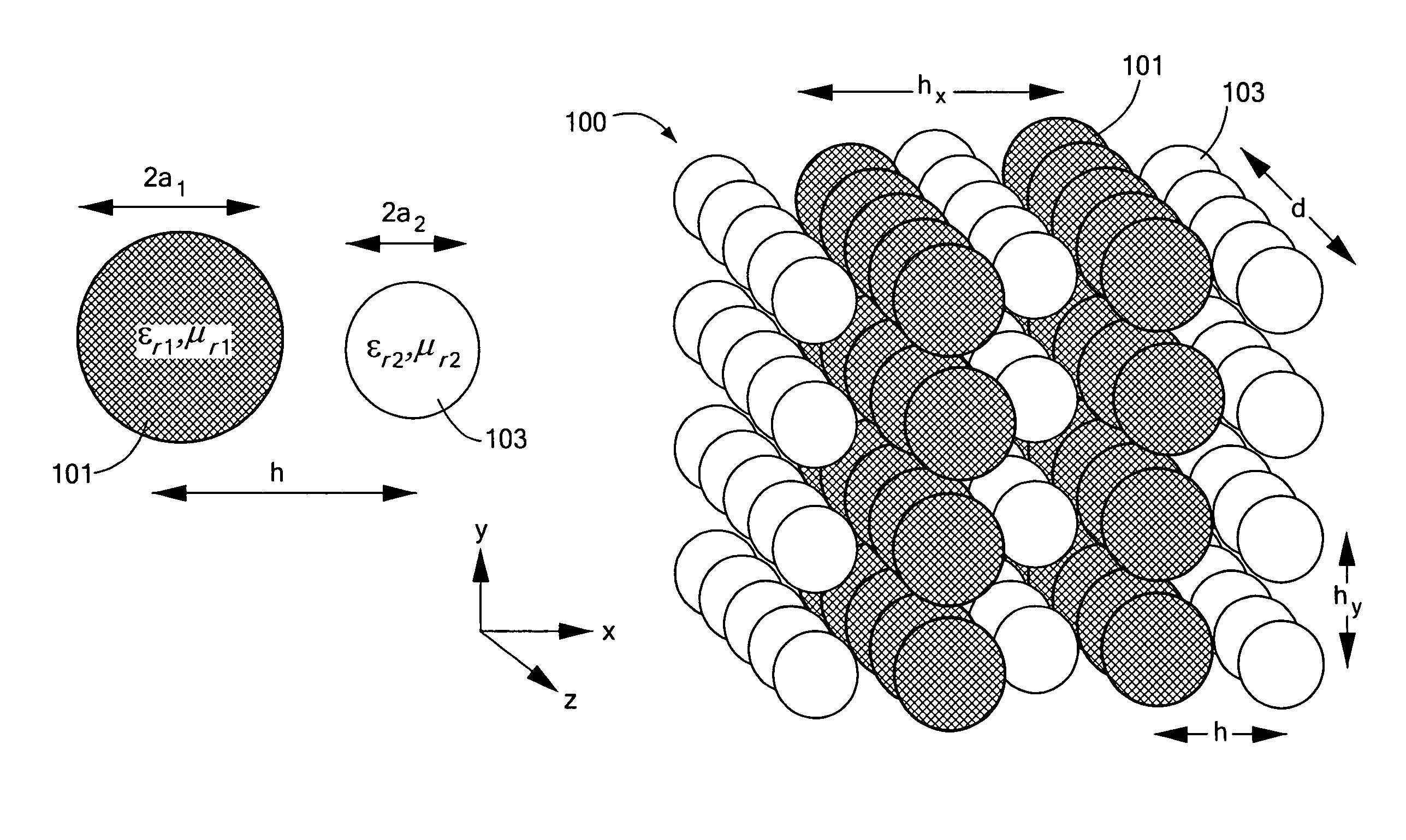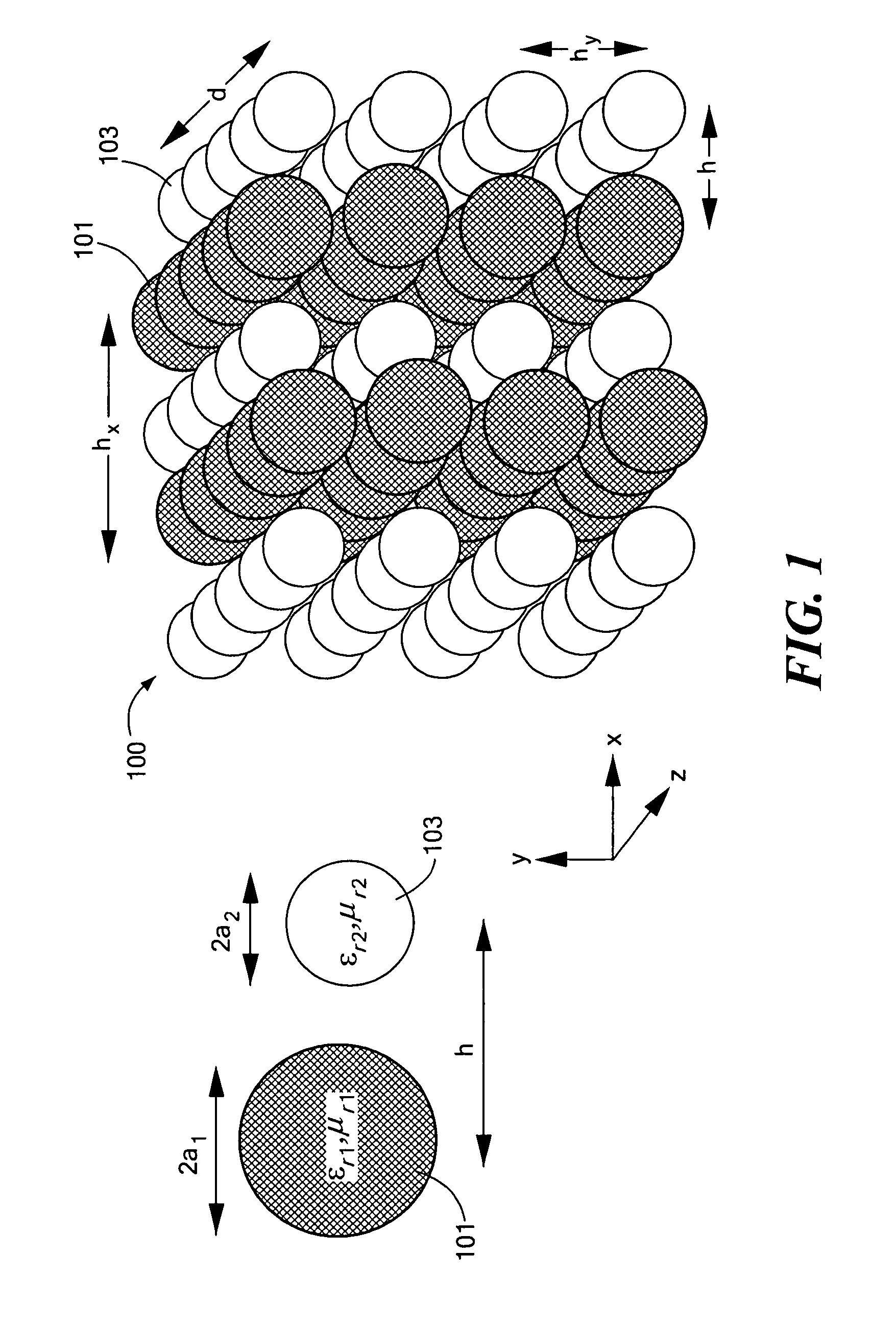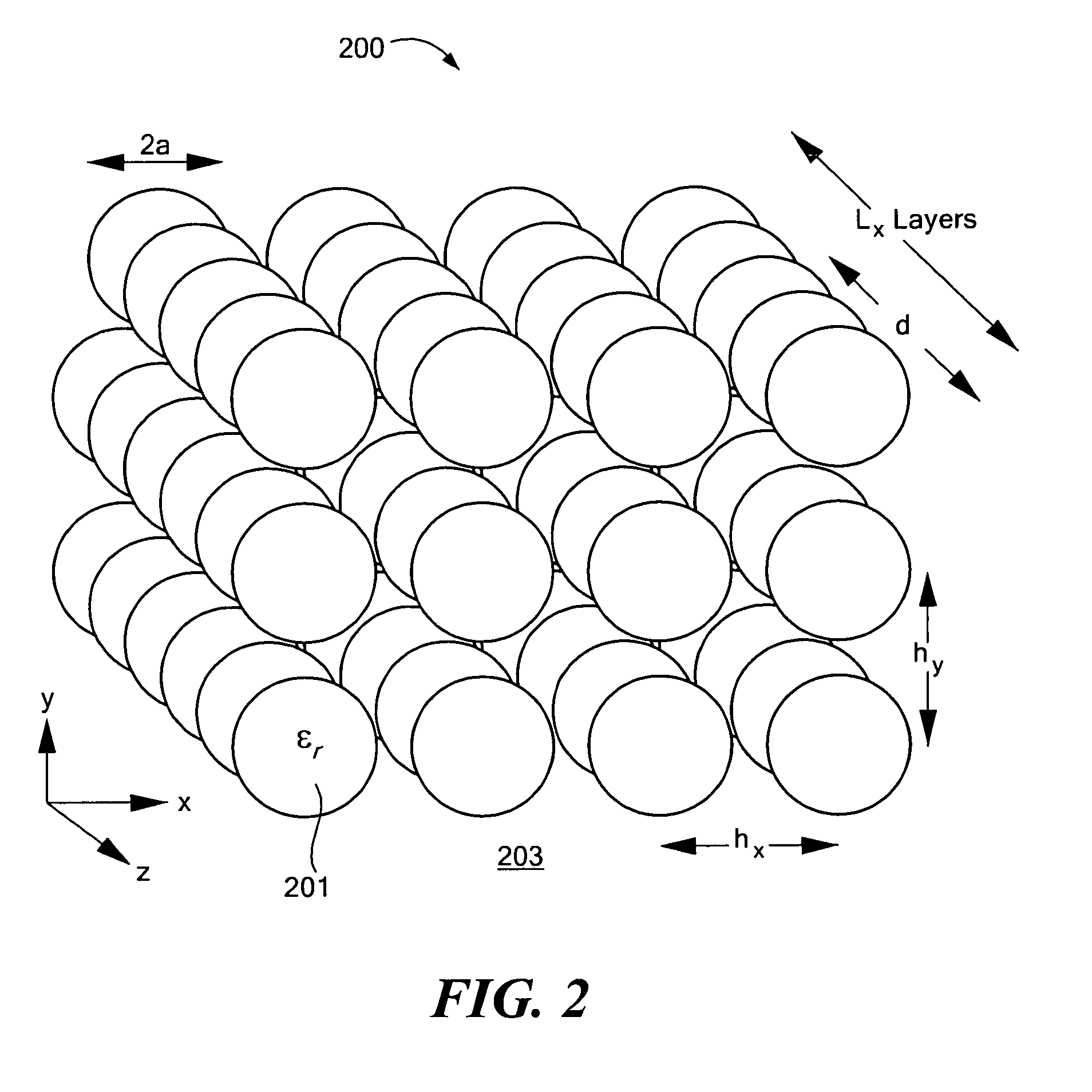Dielectric and magnetic particles based metamaterials
a technology of magnetic particles and metamaterials, applied in the direction of antennas, antenna details, coatings, etc., can solve the problems of narrow bandwidth, increase the difficulty of fabrication, and almost impossible to realize rf and optical devices, so as to enhance the bandwidth of metamaterial permittivity and permeability properties, increase the couplings of embedded dielectrics, and reduce the loss
- Summary
- Abstract
- Description
- Claims
- Application Information
AI Technical Summary
Benefits of technology
Problems solved by technology
Method used
Image
Examples
first embodiment
[0028]In a first embodiment, as shown in FIG. 1, two sets of dielectric particles 101 and 103 are embedded in a host matrix 105. In this embodiment, the particles 101 and 103 are spherical particles, though it will be understood that they can be any suitable shape. A metamaterial according to this embodiment comprises a 3D array of dielectric spheres with a pair of different spheres 101, 103 acting as a unit-cell building block. Sphere 101 is characterized by a dielectric constant ∈r1 and a radius a1, and sphere 103 is characterized by a dielectric constant ∈r2 and a radius a2. One sphere in the unit-cell provides electric resonance and the other sphere offers magnetic resonance. Above the resonances, negative ∈ and negative μ metamaterial properties are achieved. An interlocking lattice of spheres 101 and 103 in host matrix 105 forms a 3D metamaterial array 100.
[0029]To obtain backward wave and double negative (DNG) behaviors, the appropriate electric and magnetic dipole moments ar...
second embodiment
[0033]FIG. 2 illustrates a dielectric metamaterial array 200. In this embodiment, a single set of identical dielectric particles, which in this case are spheres 201, is embedded in a low-dielectric (e.g., ∈˜1) matrix 203. The spheres 201 have a relatively low dielectric constant (e.g., ∈˜12.5), and are preferably comprised of gallium phosphide (GaP). The spheres are configured to operate in their magnetic resonances where their couplings offer electric resonances (i.e., LC-type circuit model). Combination of the electric and magnetic modes provides backward wave material, including in the optical region. The structure can be electronically tuned by properly shining the light on GaP spheres.
[0034]According to yet another embodiment, a metamaterial array comprises a single set of hexaferrite particles embedded in a host low dielectric background matrix. The array can be configured similar to the GaP array of FIG. 2, though the embedded particles (e.g., spheres) are comprised of a hexa...
PUM
 Login to View More
Login to View More Abstract
Description
Claims
Application Information
 Login to View More
Login to View More - R&D
- Intellectual Property
- Life Sciences
- Materials
- Tech Scout
- Unparalleled Data Quality
- Higher Quality Content
- 60% Fewer Hallucinations
Browse by: Latest US Patents, China's latest patents, Technical Efficacy Thesaurus, Application Domain, Technology Topic, Popular Technical Reports.
© 2025 PatSnap. All rights reserved.Legal|Privacy policy|Modern Slavery Act Transparency Statement|Sitemap|About US| Contact US: help@patsnap.com



